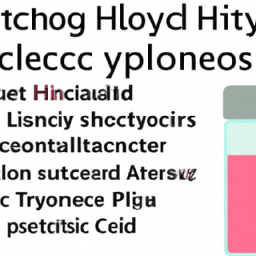how many stages helicobacter pylori testing technology endured? what is current best technology?

Is helicobacter pylori existing in healthy human body?
2023-02-18
is helicbacter pylori testing difficult to carry out? is it possibel to do it at home?
2023-02-18how many stages helicobacter pylori testing technology endured? what is current best technology?

how many stages helicobacter pylori testing technology endured? what is current best technology?
-
Table of Contents
“From Microscopy to Molecular Diagnostics: Uncovering the Best Technology for Helicobacter Pylori Testing.”
Introduction
Helicobacter pylori testing technology has undergone a number of stages of development over the years. Initially, the testing was done using culture-based methods, which were labor-intensive and time-consuming. This was followed by the introduction of serological tests, which were more rapid but less accurate. More recently, molecular tests such as PCR and antigen tests have been developed, which are more accurate and faster than the earlier methods. The current best technology for testing for Helicobacter pylori is the PCR test, which is highly sensitive and specific and can detect the presence of the bacteria in a sample within a few hours.
Comparing the Pros and Cons of Current H-pylori Testing Technologies: What’s the Best Option?
The diagnosis of Helicobacter pylori (H-pylori) infection is an important step in the management of gastric diseases. There are several testing technologies available for the detection of H-pylori, each with its own advantages and disadvantages. In order to determine the best option for testing, it is important to compare the pros and cons of the current technologies.
The most commonly used test for H-pylori is the urea breath test (UBT). This test is non-invasive, easy to perform, and highly accurate. It is also relatively inexpensive and can be completed in a short amount of time. However, the UBT is not suitable for patients who have recently taken antibiotics or bismuth-containing medications, as these can interfere with the test results.
Another option for H-pylori testing is the stool antigen test (SAT). This test is also non-invasive and relatively inexpensive, and it can detect the presence of H-pylori antigens in the stool. However, the SAT is not as accurate as the UBT, and it is not suitable for patients who have recently taken antibiotics or bismuth-containing medications.
The third option for H-pylori testing is the endoscopic biopsy. This test is invasive and requires the patient to undergo an endoscopy procedure. It is also more expensive than the other tests, and it can take several days to get the results. However, the endoscopic biopsy is the most accurate test for H-pylori, and it is not affected by recent antibiotic or bismuth-containing medication use.
In conclusion, the best option for H-pylori testing depends on the individual patient’s needs and circumstances. The UBT is the most convenient and cost-effective option, but it is not suitable for patients who have recently taken antibiotics or bismuth-containing medications. The SAT is also non-invasive and relatively inexpensive, but it is not as accurate as the UBT. The endoscopic biopsy is the most accurate test, but it is invasive and expensive. Ultimately, the best option should be determined on a case-by-case basis.
Exploring the Different Stages of H-pylori Testing Technology
H-pylori testing technology has come a long way since its inception. This technology is used to detect the presence of Helicobacter pylori, a bacterium that can cause stomach ulcers and other gastrointestinal issues. In this article, we will explore the different stages of H-pylori testing technology and how it has evolved over time.
The first stage of H-pylori testing technology was the use of a stool sample. This method involved collecting a sample of the patient’s stool and testing it for the presence of H-pylori. This method was effective, but it was not always reliable and could lead to false positives or false negatives.
The second stage of H-pylori testing technology was the use of a blood test. This method involved taking a sample of the patient’s blood and testing it for the presence of H-pylori antibodies. This method was more reliable than the stool sample test, but it was still not always accurate.
The third stage of H-pylori testing technology was the use of a breath test. This method involved having the patient blow into a device that would measure the amount of H-pylori present in their breath. This method was more reliable than the previous two methods, but it was still not always accurate.
The fourth stage of H-pylori testing technology was the use of an endoscopy. This method involved inserting a camera into the patient’s stomach and taking a sample of the tissue to test for the presence of H-pylori. This method was the most reliable of all the methods, but it was also the most invasive.
The fifth and final stage of H-pylori testing technology is the use of a PCR test. This method involves taking a sample of the patient’s saliva and testing it for the presence of H-pylori DNA. This method is the most accurate of all the methods and is the most commonly used today.
H-pylori testing technology has come a long way since its inception. It has evolved from a stool sample test to a PCR test, which is the most accurate and reliable method available today. This technology has allowed doctors to diagnose and treat H-pylori infections more effectively, leading to better patient outcomes.
A Historical Overview of H-pylori Testing Technology: How Far We’ve Come
H-pylori testing technology has come a long way since its inception in the early 1980s. Initially, the only way to detect the presence of H-pylori was through a biopsy of the stomach lining. This method was both invasive and time-consuming, and it was not always reliable.
In the late 1980s, the development of the urea breath test revolutionized H-pylori testing. This non-invasive test uses a radioactive isotope to detect the presence of H-pylori in the stomach. The test is quick and easy to administer, and it is highly accurate.
In the 1990s, the development of the stool antigen test further improved H-pylori testing. This test uses an antibody to detect the presence of H-pylori in the stool. It is also non-invasive and highly accurate.
In the 2000s, the development of the serology test further improved H-pylori testing. This test uses a blood sample to detect the presence of antibodies to H-pylori. It is also non-invasive and highly accurate.
Today, H-pylori testing technology is more advanced than ever before. There are a variety of tests available, including the urea breath test, the stool antigen test, and the serology test. These tests are non-invasive, quick, and highly accurate.
H-pylori testing technology has come a long way since its inception in the early 1980s. Thanks to advances in technology, H-pylori testing is now quick, easy, and highly accurate. This has allowed for more accurate diagnosis and treatment of H-pylori infections, leading to better patient outcomes.
Conclusion
The testing technology for Helicobacter pylori has gone through many stages of development over the years. From the initial culture-based methods to the more advanced molecular-based methods, the technology has evolved to become more accurate and reliable. The current best technology for testing for Helicobacter pylori is the PCR-based method, which is highly sensitive and specific and can detect the presence of the bacteria in a sample with great accuracy.
If you want to learn more about the many stages of Helicobacter pylori testing technology and what the current best technology is, click here to find out more!



